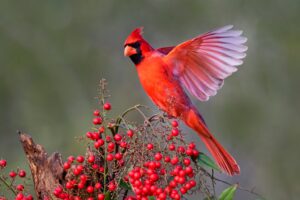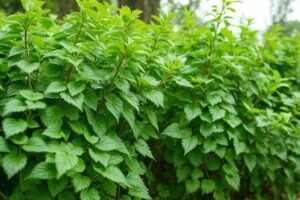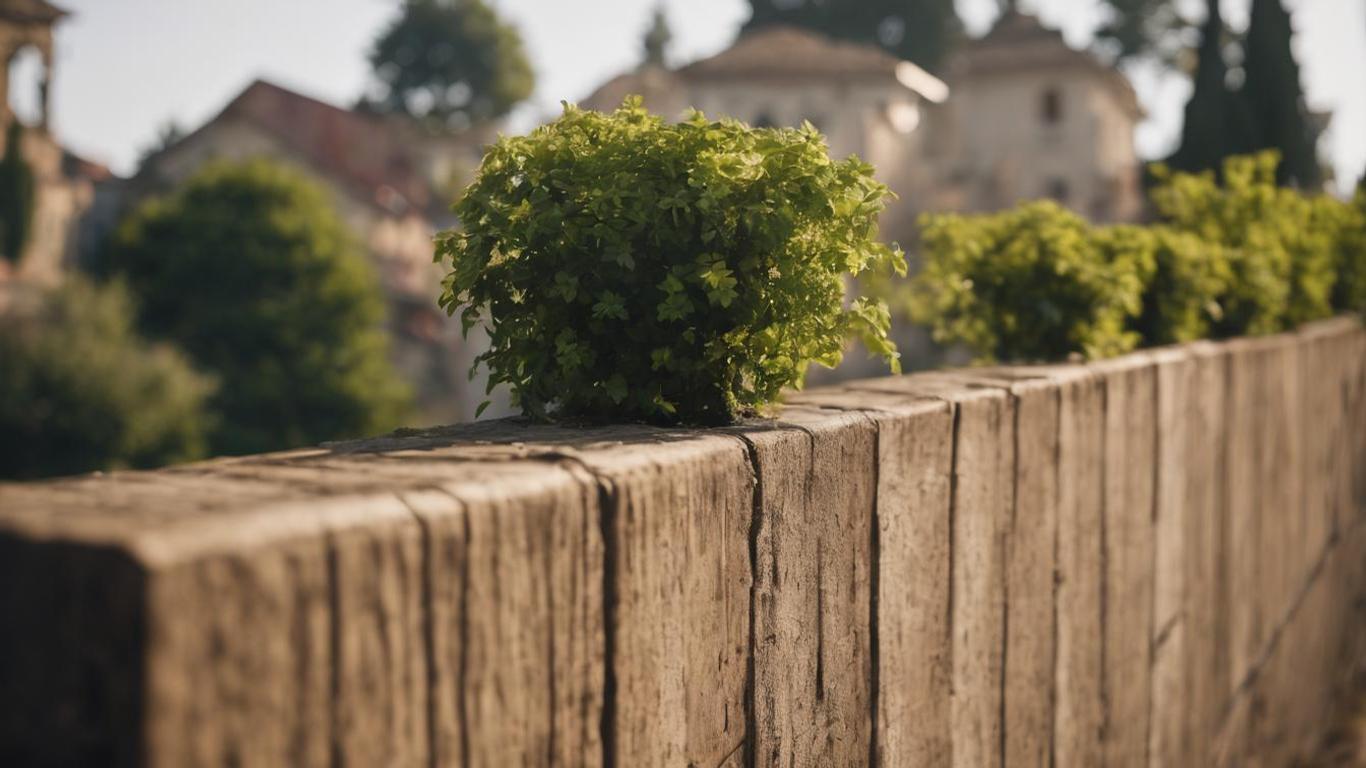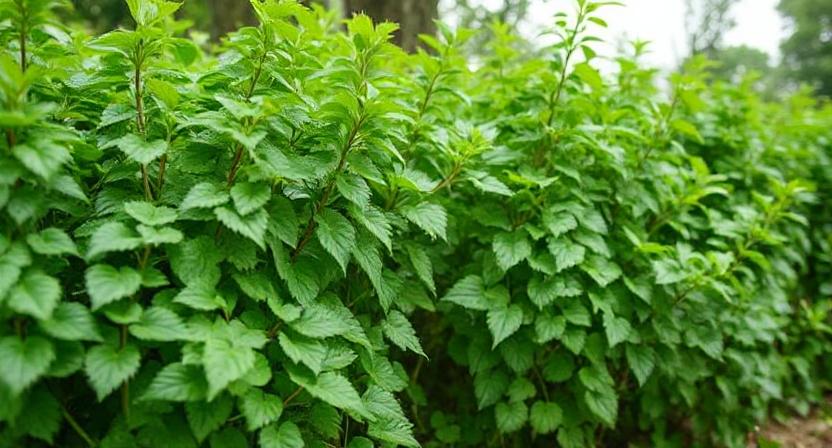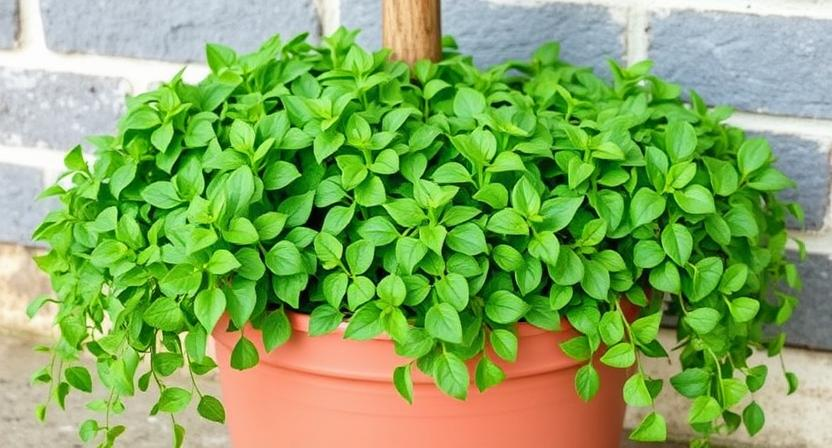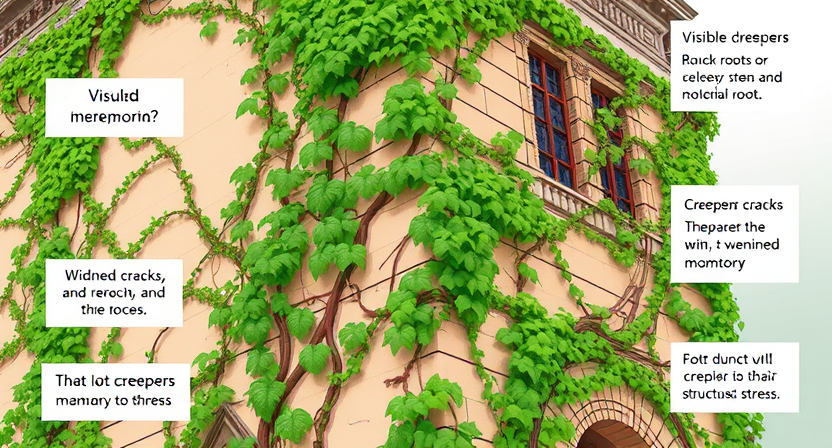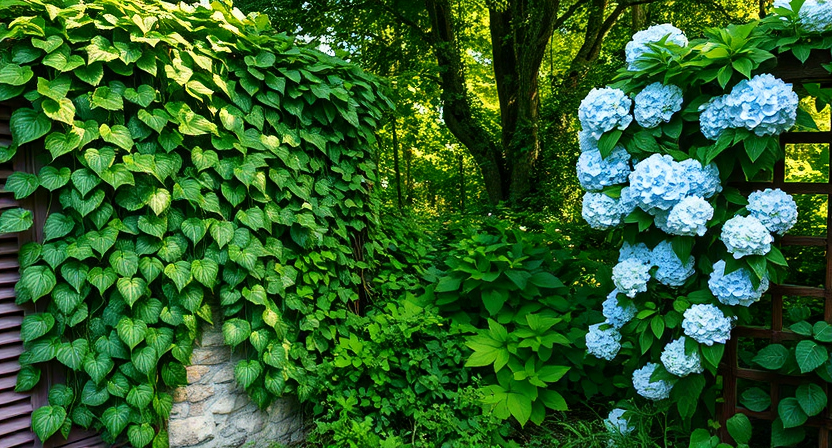Identifying Creepers in Your Garden
Identifying creepers in your garden is essential for maintaining a healthy and thriving outdoor space. These invasive plants can quickly take over and cause damage to both your plants and the overall aesthetic of your garden. One common creeper to look out for is the English ivy, with its distinctive lobed leaves and vigorous growth habit. It can climb up trees and other structures, smothering and shading out the plants underneath. Another creeper to be aware of is the creeping Charlie, also known as ground ivy, which spreads rapidly across the ground, forming thick mats that can hinder the growth of desired plant species.
Additionally, keep an eye out for the Japanese honeysuckle, a creeper that produces beautiful, fragrant flowers. While it may seem appealing at first, this vine quickly becomes aggressive and can strangle other plants in its path. The morning glory is another insidious creeper, with its heart-shaped leaves and tendrils that help it climb effortlessly. Although its vibrant flowers are eye-catching, the morning glory can become quite invasive if not controlled properly. By being able to identify these common creepers, you can take the necessary steps to prevent their growth and protect the beauty of your garden.
• English ivy: distinctive lobed leaves, vigorous growth habit, climbs up trees and structures
• Creeping Charlie (ground ivy): spreads rapidly across the ground, forms thick mats that hinder growth of desired plants
• Japanese honeysuckle: produces beautiful, fragrant flowers but becomes aggressive and can strangle other plants
• Morning glory: heart-shaped leaves, tendrils for climbing, vibrant flowers; can become invasive if not controlled properly
The Damage Caused by Creepers
Creepers can cause significant damage to your garden, both aesthetically and functionally. Their wandering vines can quickly overrun and smother other plants, depriving them of sunlight, nutrients, and space to grow. As a result, the affected plants may weaken or die, disrupting the overall harmony and balance of your garden.
Moreover, creepers have the ability to penetrate and damage structures within your garden. Their relentless growth can lead to cracks in walls, fences, and even pavement, causing potential safety hazards. This can result in costly repairs and the need for continuous maintenance to keep your garden in good condition. Therefore, it is crucial to identify and address the damage caused by creepers in order to maintain a healthy garden environment.
– Creepers can quickly overrun and smother other plants, depriving them of sunlight, nutrients, and space to grow.
– Affected plants may weaken or die, disrupting the overall harmony and balance of your garden.
– Creepers have the ability to penetrate and damage structures within your garden.
– Their relentless growth can lead to cracks in walls, fences, and pavement.
– This can cause potential safety hazards and require costly repairs.
– Continuous maintenance is necessary to keep your garden in good condition.
Understanding the Behavior of Creepers
Creepers, also known as climbing or trailing plants, are a common feature in many gardens. Understanding their behavior is essential in effectively managing their growth and preventing any potential damage they may cause. Creepers are characterized by their ability to climb or crawl along surfaces, using various mechanisms such as tendrils, clinging roots, or twining stems. They do so in order to reach sunlight for photosynthesis and access nutrients from the ground. This behavior enables them to spread rapidly and cover vast areas in a relatively short period.
One important aspect of understanding creepers is knowing the different types and their growth habits. Some creepers, like ivy or clematis, have aerial roots that allow them to attach themselves to walls or other structures. Others, such as morning glory or sweet peas, have twining stems and require some form of support to climb. Additionally, creepers like creeping thyme or creeping juniper spread horizontally along the ground, making them ideal for ground cover. By recognizing these behaviors, gardeners can select appropriate management strategies to prevent creepers from overwhelming desired plants or structures in the garden.
• Creepers have the ability to climb or crawl along surfaces using various mechanisms such as tendrils, clinging roots, or twining stems.
• They do so in order to reach sunlight for photosynthesis and access nutrients from the ground.
• This behavior enables them to spread rapidly and cover vast areas in a relatively short period of time.
Understanding the different types of creepers and their growth habits is crucial in effectively managing their growth. Here are some common types:
• Ivy: These creepers have aerial roots that allow them to attach themselves to walls or other structures.
• Clematis: Similar to ivy, clematis also has aerial roots but is known for its beautiful flowers.
• Morning glory: These creepers have twining stems and require support such as trellises or fences to climb.
• Sweet peas: Like morning glory, sweet peas also have twining stems and need support for climbing.
• Creeping thyme: This creeper spreads horizontally along the ground, making it ideal for ground cover.
• Creeping juniper: Another creeper that spreads horizontally on the ground, often used as a low-maintenance landscaping option.
By recognizing these behaviors and understanding the different types of creepers, gardeners can select appropriate management strategies. Some strategies may include:
1. Providing support structures like trellises or fences for climbers like morning glory or sweet peas.
2. Regular pruning or trimming back overgrown creepers like ivy or clematis attached to walls or structures.
3. Creating barriers like mulch beds around creeping thyme or creeping juniper to contain their horizontal spread.
Overall, understanding the behavior of creepers is essential in maintaining a well-managed garden. By selecting appropriate management strategies based on their growth habits and type, garden enthusiasts can prevent these plants from overwhelming desired plants or structures while still enjoying their beauty and benefits in the garden space.
Creating Physical Barriers for Creepers
One effective method for controlling the growth of creepers in your garden is by creating physical barriers. These barriers can be constructed using various materials, such as wire mesh, garden stakes, or even bamboo poles. The idea behind using physical barriers is to create a boundary that prevents creepers from spreading and taking over other plants in your garden.
When creating these barriers, it is important to ensure that they are sturdy and secure. This will ensure that no gaps are left for the creepers to slip through. Additionally, it is essential to regularly monitor and maintain these barriers to ensure their effectiveness in keeping the creepers at bay. By utilizing physical barriers, you can control the growth of creepers in your garden and maintain a healthy and thriving landscape.
• Construct physical barriers using wire mesh, garden stakes, or bamboo poles
• Ensure the barriers are sturdy and secure to prevent creepers from slipping through
• Regularly monitor and maintain the barriers for their effectiveness
• Control the growth of creepers in your garden
• Maintain a healthy and thriving landscape
Choosing the Right Plants for Your Garden
When it comes to creating a beautiful garden, selecting the right plants is crucial. Not all plants thrive in every type of garden, so it is essential to choose ones that are well-suited to your specific conditions. Factors such as sunlight, soil type, and climate should be taken into consideration to ensure the plants you choose will flourish and enhance the beauty of your garden for years to come.
To start, assess the amount of sunlight your garden receives throughout the day. Some plants require full sun, while others prefer partial or even full shade. By understanding the sunlight conditions in your garden, you can choose plants that will thrive in the given light levels. Additionally, consider the soil type in your garden. Plants vary in their soil preferences, with some thriving in well-drained soil, while others prefer sandy or clayey soil. By understanding your garden’s soil composition, you can choose plants that will grow and establish their root systems successfully.
• Assess the amount of sunlight your garden receives throughout the day
• Choose plants that thrive in full sun, partial shade, or full shade
• Consider the soil type in your garden
• Some plants prefer well-drained soil, while others prefer sandy or clayey soil
• Understand your garden’s soil composition to choose plants that will grow successfully and establish their root systems
Implementing Natural Repellents for Creepers
Natural repellents can be an effective and environmentally friendly way to keep creepers out of your garden. There are several options when it comes to implementing natural repellents for creepers. One common method is to use strong-smelling substances such as garlic or chili peppers. These odors are known to repel many types of creepers, making them less likely to invade your garden. Another natural repellent option is the use of essential oils, such as peppermint or citronella. These oils can be mixed with water and sprayed directly onto plants or applied to fences or other structures to create a barrier against creepers. Implementing natural repellents is a safe and non-toxic solution to keep your garden creeper-free.
In addition to strong odors and essential oils, there are other natural substances that can act as effective repellents for creepers. One such substance is vinegar, which can be diluted with water and applied to affected areas. Vinegar works by altering the pH of the soil, making it less favorable for creepers to grow. Another option is using soapy water as a repellent. Simply mix a few drops of dish soap with water and spray it on the foliage of plants or directly on the creepers themselves. This method can help deter them from feeding on your plants. Implementing natural repellents is a proactive approach that can help protect your garden from creepers without the use of harmful chemicals.
• Garlic or chili peppers can be used as strong-smelling substances to repel creepers
• Essential oils like peppermint or citronella can be mixed with water and sprayed onto plants or structures
• Vinegar can be diluted with water and applied to affected areas to alter the pH of the soil
• Soapy water, made by mixing dish soap with water, can deter creepers from feeding on plants
• Implementing natural repellents is a safe and non-toxic solution for keeping your garden creeper-free
Using Chemical-Free Solutions to Deter Creepers
Gardening enthusiasts often find themselves grappling with the pesky problem of creepers invading their beloved green spaces. While there are chemical-based solutions available, some gardeners prefer to take a more natural approach when it comes to deterring these unwelcome guests. Fortunately, there are several chemical-free solutions that can effectively deter creepers from wreaking havoc in your garden.
One effective method is by using organic repellents. These can range from natural sprays made from essential oils to homemade concoctions concocted from everyday kitchen ingredients. For instance, garlic spray is known to be a potent creeper deterrent. Simply mix minced garlic with water, allow it to steep overnight, strain the liquid, and then spray it onto the leaves and stems of affected plants. The pungent odor repels creepers, preventing them from encroaching upon your garden.
• Garlic spray: Mix minced garlic with water, steep overnight, strain the liquid, and spray onto leaves and stems of affected plants.
• Essential oil sprays: Use natural sprays made from essential oils to deter creepers.
Another chemical-free solution is companion planting. This involves strategically placing certain plants next to each other in order to repel pests. For example, marigolds are known to deter creepers due to their strong scent. Planting marigolds near vulnerable plants can help keep them creeper-free. Similarly, herbs like basil and mint also have repellent properties that can be utilized in companion planting.
• Companion planting: Strategically place certain plants next to each other for pest deterrents.
– Marigolds: Plant marigolds near vulnerable plants due to their strong scent.
– Basil and mint: Utilize these herbs in companion planting as they have repellent properties.
Physical barriers can also be effective in deterring creepers without the use of chemicals. Installing fences or trellises around your garden can create a physical barrier that prevents creepers from entering or climbing onto your precious plants. Additionally, using mulch or gravel around the base of your plants can make it difficult for creepers to take root and spread.
• Fences and trellises: Install these structures around your garden as physical barriers against creepers.
• Mulch or gravel: Use these materials around plant bases to impede creeper growth.
Regular maintenance is another key aspect of preventing creeper invasion naturally. Regularly inspecting your garden for any signs of infestation allows you to catch potential problems early on before they become major issues. Removing weeds promptly not only helps maintain the overall health of your garden but also eliminates potential hiding spots for creeping pests.
• Regular inspection: Check your garden regularly for signs of infestation.
• Weed removal: Promptly remove weeds as they serve as hiding spots for creeping pests.
In conclusion, deterring creepers in your garden without the use of chemicals is possible with the help of organic repellents, companion planting, physical barriers, and regular maintenance. By incorporating these chemical-free solutions into your gardening routine, you can maintain a beautiful and pest-free green space that both you and your plants will enjoy.
Maintaining Proper Garden Maintenance Practices
Proper garden maintenance is essential in keeping creepers under control and ensuring a healthy garden environment. Regular pruning and trimming of plants and shrubs not only improves their appearance but also prevents creepers from spreading uncontrollably. Removing dead or diseased foliage promptly reduces the risk of pests and diseases taking hold, which can attract and support the growth of creepers.
Additionally, it is important to regularly inspect your garden for any signs of creeper infestation. By identifying and removing creepers early on, you can prevent them from establishing a foothold and causing damage to other plants. Inspecting your garden also allows you to spot any potential entry points or weak spots in your physical barriers, ensuring they remain effective in keeping creepers at bay.
• Regular pruning and trimming of plants and shrubs
• Removing dead or diseased foliage promptly
• Inspecting the garden for signs of creeper infestation
• Identifying and removing creepers early on to prevent damage to other plants
• Spotting potential entry points or weak spots in physical barriers.
Attracting Natural Predators of Creepers
Attracting natural predators of creepers can be a beneficial and eco-friendly approach to controlling these pesky plants in your garden. Many gardeners find that by encouraging the presence of these natural predators, such as birds, frogs, and insects, the population of creepers can be kept under control without resorting to harmful chemical pesticides.
One effective way to attract natural predators is by providing them with a suitable habitat. This can be done by incorporating native plants that provide food and shelter for these beneficial creatures. For instance, planting flowering shrubs or trees that produce berries can attract birds, while creating small water features can attract frogs and insects. By ensuring that your garden offers a diverse range of habitats and food sources, you can create an environment that naturally supports the presence of these predator species.
• Incorporate native plants that provide food and shelter for natural predators
• Plant flowering shrubs or trees that produce berries to attract birds
• Create small water features to attract frogs and insects
• Ensure your garden offers a diverse range of habitats and food sources
Seeking Professional Help for Creeper Control
Many homeowners find themselves overwhelmed when it comes to dealing with creepers in their gardens. Despite their best efforts, these persistent plants can be difficult to control and eradicate completely. This is where seeking professional help for creeper control becomes a viable option.
Professional gardeners and landscapers have extensive experience in dealing with various types of creepers and can offer valuable insights and solutions for managing them effectively. They possess a deep understanding of the behavior of these plants, enabling them to identify the most appropriate methods for control. Additionally, professionals have access to specialized tools and equipment that can make the process more efficient and effective. By entrusting the task to the experts, homeowners can have peace of mind knowing that their garden will be in capable hands, allowing them to enjoy a creeper-free space without the stress and frustration of trying to tackle the problem themselves.
• Professional gardeners and landscapers have extensive experience in dealing with various types of creepers
• They possess a deep understanding of the behavior of these plants
• They can offer valuable insights and solutions for managing creepers effectively
• Professionals have access to specialized tools and equipment for more efficient control
• Entrusting the task to experts allows homeowners to enjoy a creeper-free space without stress




